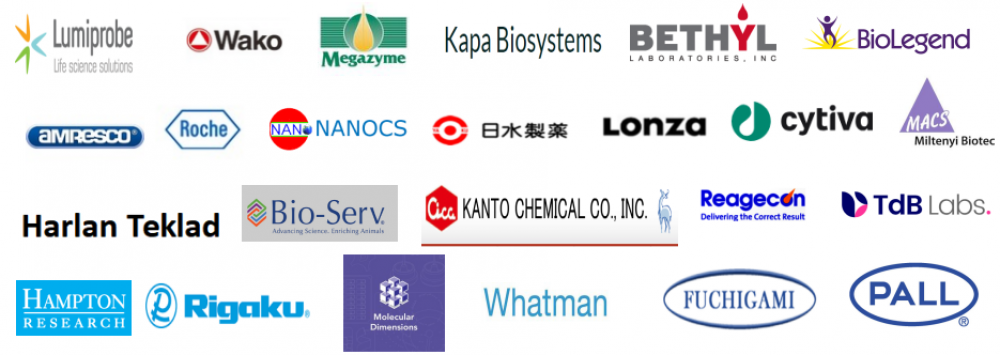Oxoid代理 CM0437B SCHAEDLER AGAR 500G使用说明书
Dehydrated Culture Media
Code: CM0437
A medium free from thioglycollate for the growth of aerobic and anaerobic organisms.
| Typical Formula* |
gm/litre |
| Tryptone Soya Broth (Oxoid CM129) |
10.0 |
| Special peptone |
5.0 |
| Yeast extract |
5.0 |
| Glucose |
5.0 |
| Cysteine HCl |
0.4 |
| Haemin |
0.01 |
| Tris Buffer |
0.75 |
| Agar |
13.5 |
| pH 7.6 ± 0.2 @ 25°C |
* Adjusted as required to meet performance standards
Directions
Suspend 40g in 1 litre of distilled water and boil to dissolve the medium completely. Sterilise by autoclaving at 121°C for 15 minutes. Mix well before pouring.
* 根据需要进行调整以满足性能标准
方向
将 40g 悬浮在 1 升蒸馏水中并煮沸以完全溶解培养基。 通过在 121°C 高压灭菌 15 分钟进行灭菌。 倒入前充分混合。
Description
Schaedler, Dubos and Costello1 formulated this medium for the isolation of aerobic and anaerobic micro-organisms from the gastro-intestinal tract of mice. Mata, Carrillo and Villatoro2 modified the formula in their studies on anaerobic human faecal microflora. The modified formula has been used in Oxoid Schaedler Anaerobe Agar/Broth and the medium can be used to create selective conditions under which the required, delicate and more nutritionally exacting micro-organisms of the intestinal tract would develop, despite the presence of antagonistic organisms. Normally such fastidious micro-organisms would be swamped by the growth of enterococci, coliform bacilli and other Gram-negative bacilli.
In both studies1,2 the use of the base medium with selective agents (shown overleaf) for the isolation and enumeration of Lactobacillus, Streptococcus, Clostridium, Bacteroides and Flavobacterium species from faecal samples and various organs of the digestive tract.
Although thioglycollate is widely used in anaerobic media, to lower the redox potential in order to favour growth of anaerobic organisms, some workers have reported it to be inhibitory to some anaerobes3,4.
Schaedler Anaerobe Agar contains cysteine hydrochloride and glucose, as reducing substances, with the advantage that cysteine inhibits the growth of Escherichia coli. Kari, Nagy, Kovacs & Hernadi5 have reported the inhibitory effect of cysteine on several enzymatic reactions of Escherichia coli in vitro.
Schaedler Anaerobe Agar has been shown to be a suitable alternative to blood agar for the enumeration of clostridia6 and has been used for the examination of food, waste products and ditch water7. These authors showed the necessity for strict anaerobic conditions for the successful recovery of obligate anaerobes when using this medium without the addition of blood.
Investigations at Oxoid have shown that Schaedler Anaerobe Agar gave similar results in recovery and colonial appearance to Oxoid Blood Agar Base No.2 when tested with the same organisms.
Technique
The sample suspension is diluted as necessary in order to obtain separated and countable colonies. A calibrated loopful is then spread on the surface of a previously dried Schaedler Anaerobe Agar plate. Conditions of incubation will vary according to the type of culture under test. Pure cultures may grow on the base medium and this is also used for general aerobic and anaerobic counts.
In the enumeration of Enterococcus faecalis (facultatively anaerobic) as an indicator organism in dehydrated or frozen foods and water, and for the detection of Clostridium, the medium can be used as follows:
Food sample (e.g. pre-cooked frozen food) suspensions are plated out by the surface spread technique and an aerobic viable count may be carried out at 25°C and 35°C. For pre-cooked meat products, an anaerobic viable count and a selective plate examination for Clostridium perfringens should also be performed.
Addition of Selective Agents
To 1,000ml of base agar, the following selective agents may be added:
1. Medium for anaerobic lactobacilli and anaerobic streptococci: NaCl 10.0g; Neomycin 0.002g. Incubate anaerobically at 35°C.
2. Medium for Bacteroides and clostridia: Placenta powder 2.0g; Neomycin 0.002g. Incubate anaerobically at 35°C.
3. Medium for flavobacteria: 7ml of 0.5% tyrothricin in ethanol. Incubate aerobically at 35°C.
描述
Schaedler、Dubos 和 Costello1 配制了这种培养基,用于从小鼠胃肠道中分离需氧和厌氧微生物。 Mata、Carrillo 和 Villatoro2 在他们对厌氧人类粪便微生物区系的研究中修改了公式。改良配方已用于 Oxoid Schaedler 厌氧菌琼脂/肉汤,培养基可用于创造选择性条件,在这些条件下,尽管存在拮抗性微生物,但肠道所需的、精致的和营养更严格的微生物仍会发育。通常这种挑剔的微生物会被肠球菌、大肠菌和其他革兰氏阴性杆菌的生长淹没。
在这两项研究 1,2 中,使用带有选择性试剂的基础培养基(如后页所示)从粪便样本和消化道的各种器官中分离和计数乳杆菌、链球菌、梭状芽孢杆菌、拟杆菌属和黄杆菌属。
尽管硫代乙醇酸盐广泛用于厌氧培养基中,为了降低氧化还原电位以促进厌氧生物的生长,一些工作人员报告说它对某些厌氧菌有抑制作用3,4。
Schaedler厌氧菌琼脂含有半胱氨酸盐酸盐和葡萄糖作为还原物质,具有半胱氨酸抑制大肠杆菌生长的优点。 Kari、Nagy、Kovacs 和 Hernadi5 报道了半胱氨酸在体外对大肠杆菌的几种酶促反应的抑制作用。
Schaedler 厌氧菌琼脂已被证明是用于计数梭状芽胞杆菌的血琼脂的合适替代品6,并已用于食品、废物和沟水的检查 7。这些作者表明,在不加血的情况下使用这种培养基成功回收专性厌氧菌需要严格的厌氧条件。
在 Oxoid 的研究表明,当用相同的微生物进行测试时,Schaedler 厌氧菌琼脂在恢复和菌落外观方面与 Oxoid 血琼脂基础 2 的结果相似。
技术
必要时稀释样品悬浮液以获得分离且可计数的菌落。然后将经过校准的环铺在先前干燥的 Schaedler 厌氧菌琼脂平板的表面上。孵化条件将根据待测培养物的类型而有所不同。纯培养物可以在基础培养基上生长,这也用于一般需氧菌和厌氧菌计数。
以粪肠球菌(兼性厌氧菌)作为脱水或冷冻食品和水中的指示菌进行计数,检测梭状芽胞杆菌时,可采用如下培养基:
食品样品(例如预煮冷冻食品)悬浮液通过表面扩散技术铺板,可在 25°C 和 35°C 下进行需氧活菌计数。对于预煮肉制品,还应进行厌氧菌计数和产气荚膜梭菌选择性平板检查。
添加选择性试剂
在 1,000 毫升基础琼脂中,可以添加以下选择性试剂:
1. 厌氧乳酸杆菌和厌氧链球菌培养基:NaCl 10.0g;新霉素 0.002g。 35°C 厌氧培养。
2、拟杆菌、梭状芽胞杆菌培养基:胎盘粉2.0g;新霉素 0.002g。 35°C 厌氧培养。
3. 黄杆菌培养基:7ml 0.5% 酪丝菌素的乙醇溶液。在 35°C 有氧培养。
Storage conditions and Shelf life
Store the dehydrated medium at 10-30°C and use before the expiry date on the label.
Prepared plates may be stored at 2-8°C if suitably protected.
Appearance
Dehydrated medium: Straw coloured, free-flowing powder
Prepared medium: Light straw to straw coloured gel
储存条件和保质期
将脱水培养基储存在 10-30°C 并在标签上的有效期之前使用。
如果适当保护,制备好的板可在 2-8°C 下储存。
外貌
脱水介质:稻草色、自由流动的粉末
制备培养基:浅稻草色至稻草色凝胶
Quality control
| Positive controls: | Expected results |
| Staphylococcus aureus ATCC® 25923 * | Good growth; pale straw coloured colonies |
| Clostridium sporogenes ATCC® 19404 * | Good growth; pale straw coloured colonies |
| Bacteroides fragilis ATCC® 23745 * | Good growth; pale straw coloured colonies |
| Negative control: | |
| Uninoculated medium | No change |
* This organism is available as a Culti-Loop®
Precautions
Note the comment on strict anaerobic conditions for obligate anaerobe isolation without blood.
References
1. Schaedler R. W., Dubos R. and Castello R. (1965) J. Exp. Med. 122. 59-66.
2. Mata L. J., Carrillo C. and Villatoro E. (1969) Appl. Microbiol. 17. 596-599.
3. Hibbert H. R. and Spencer R. (1970) J. Hyg. Camb. 68. 131-135.
4. Mossel D. A. A., Beerens H., Tahon-Castel Baron G. and Potspeel B. (1965) Ann. Inst. Pasteur de Lille 16. 147-156.
5. Kari C., Nagy Z., Kovacs P. and Hernadi F. (1971) J. Gen. Micro. 68. 349-356.
6. de Waart J. and Pouw H. (1970) Zbl. I. Abt. 0rig. 214. 551-552.
7. de Waart J. (1973) Personal Communication.
